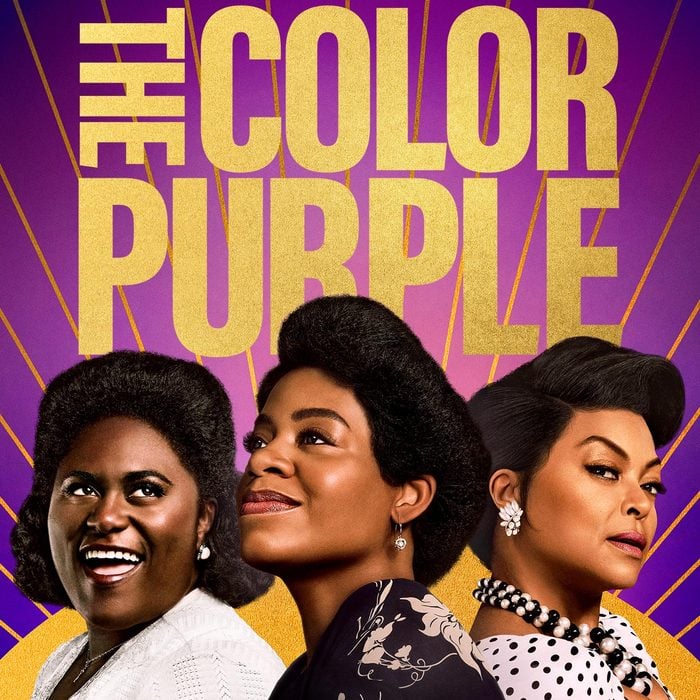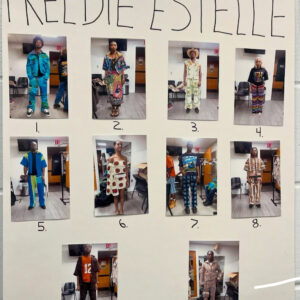Entertainment | January 10th, 2024
The 2023 “The Color Purple” Movie Gives Deeper Dive into Black Womanhood
By: Mycah Brown

On Thursday, December 22, the Dallas-Fort Worth chapter of the FAMU National Alumni Association hosted a fundraiser viewing event for “The Color Purple” at Look Dine-In Cinemas. Current students, alumni and their families gathered for a time of camaraderie and fellowship before the screening.
Former Chapter President, Adriene Brown, was amongst the moviegoers. This being the first and only movie Brown saw during the year 2023, she used it as an opportunity to connect with some old friends she hadn’t seen in years. Brown said she learned about the event from an announcement posted on Facebook, and thought it would be something nice to do with her family.
The 2023 rendition of “The Color Purple” was the first time in a while Brown had seen the story, after watching it once on-stage 20 years ago and merely bits and pieces of the classic movie. Since the 1982 book and 1985 original movie was released in theaters, “The Color Purple” has served as a tale about the harsh reality of being a black woman in the American society.
“The men in the movie didn’t seem to have any redeeming qualities,” Brown said. “But there were fairly strong female roles throughout the movie, and women supporting women, and that really stood out for me.”
A Reimagined Cast
Shug Avery, played by Taraji P. Henson, and Sofia, played by Danielle Brooks, were the two stand-out female characters, who represented a woman who knows who she is and what she wants. The movie is set in the early 1900s when the only thing that could place you in a worse position in the standard of social hierarchy than being black or a woman was being both, black and a woman. These two characters grasped the audience’s attention because they unforgivably operated in their truth and didn’t allow others to walk over them despite that being the societal norm.
On the other hand, the female lead character, Celie, played by Fantasia, depicted the reality of many women of the time who had been broken to the point of not being able to recognize or acknowledge their own worth. Subsequently, Celie allowed the men in her life to walk over her. In turn, she showed her strength by having the ability to carry on with her life despite any adversity that was placed in her path.
“The Color Purple” depicts a disparaging tale of the black woman in America, where her experience facing discrimination doesn’t just come from the outside world and external forces but starts right at home.
Please note, if you haven’t already watched the film and you’re trying to avoid spoilers this might be a good stopping point for you. Don’t say I didn’t warn you.
Celie’s Story
When we’re first introduced to Celie, she and her sister Nettie are still living at home with their stepfather, who had been sexually abusing Celie and gave their two children up for adoption against her will. Seeing as though she had no money of her own and no property, Celie had no say in the direction of her life.
Early on, a man who they refer to as “Mister,” seeks out the girls’ stepfather in hopes of pursuing Nettie for her hand in marriage. Their stepfather, Alfonso, declines his request to take Nettie as his wife but offers Celie instead. He tells him that while Celie isn’t as easy on the eye as Nettie, Celie would be a better wife for him.
There’s so much to unpack from this interaction. At face value, Celie may have been a better wife because she was more docile and would do as she was told, accepting any type of mistreatment that she’d been subjected to. But some spectators, like Ayri Tucker, believe that this is also one of many examples of colorism displayed through the film. It has been proven time and again that women are always judged by their appearance first before exploring their minds and character. But for the black woman, it goes much deeper.
According to the Merriam-Webster Dictionary, colorism is defined as “prejudice or discrimination especially within a racial or ethnic group favoring people with lighter skin over those with darker skin.”
For context, Celie is a dark-skinned black woman and her sister, Nettie, is of lighter complexion. While both facing discrimination as a result of being black women Nettie and others like Shug Avery, who also had a lighter complexion, were treated better by the men in society than Celie and Sofia who had less desirable complexions and features.
A Tale Retold
Tucker explains that the 2023 version of this film displays a more upbeat nature than the few clips of the original that she saw, from the music to the choreography and what she describes as a beautiful skin tone diverse class.
“For black women, us being black women, me specifically speaking and identifying as a black woman, there is a such thing as pretty privilege within all people, but you can add in ‘What is your skin tone? How well do you keep up with yourself? What do you wear?’ stuff like that,” Tucker said. “ So there are additions and materialistic things we do to not only feel better, but ultimately look better within our own beauty standard of people that look like us. Because if you’re black, you can’t reach eurocentric beauty standards unless you have European ancestry. Most people of African and Caribbean descent won’t genetically have those features.”
Tucker goes on to explain, with Sofia and Celie as examples, that these women were treated poorly because of their appearance despite both still being beautiful black women. While this piece of the movie spoke to the younger viewers, many older audience members didn’t pick up on that piece. Maybe because the original film, which they are more familiar with, was cast with people who were very similar in complexion.
A Modern Musical
Colvin Gibson, a now-retired history buff who saw the film many years ago, also enjoyed the new version of the movie and the different aspects of the black experience it portrayed. While keeping the same storyline and adding complexity to the characters, the 2023 version made for an award-deserving movie.
“It was almost like taking a picture of a different angle of something you already had a picture of,” Gibson said. “This particular version, I thought, really brought out the characters differently, and was perhaps more realistic in the way they were portrayed. All in all, the characters were more defined and overall much better.”
While many of the topics displayed throughout the movie are harsh and not easily digestible, it’s safe to say that the 2023 version of “The Color Purple” made for an engaging story. Viewers of all ages can relate in one aspect or another to central themes in the black experience, while each having their own perspective of the meaning behind the movie. Since the release of Alice Walker’s 1982 book, this story continues to serve as an outlet for exposing the truth about life as a black woman in America.






